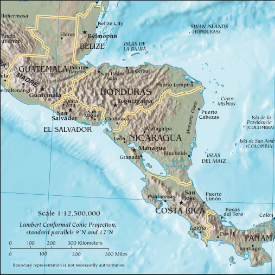Migrant Caravan Sends Ripple Effect Through Apparel Industry
A large caravan of migrants headed north from Central America sends a ripple effect through the apparel manufacturing industry.

TEGUCIGALPA, Honduras-A massive caravan of migrants continues to make its way north from Central America through Mexico with the eventual destination of the U.S. border. As of Oct. 25, the Associated Press estimates the group at 4,000 to 5,000 people journeying from countries including Honduras and Guatemala.
The caravan, mainly comprised of migrants fleeing large-scale gang violence and political turmoil, has had an impact both on U.S. political rhetoric, as well as the region where the journeyers originate, known as the Northern Triangle. Covering ground in Honduras, El Salvador, and Guatemala, the area is a massive hub for apparel and textile manufacturing including companies like Fruit of the Loom, Hanes, and Gildan.
The issue at hand, WWD reports, is that the exodus of citizens casts a shadow on initiatives like Honduras 2020. The endeavor aims to generate 200,000 textile jobs, improve conditions in Honduras for textile workers, and reduce the country’s carbon footprint, ultimately setting the nation apart from nearby nations like Mexico. In Sept. 2017, Honduras attracted more than $1 billion in investments to further the project. Despite those investments, individuals in the region tell WWD that the project is not moving forward as projected.
“We are going to close the year with 159,000 jobs, just like last year,” Freddy Carrasco, head of the labor syndicate at Honduran textiles maker Tegra, tells the publication. The original projection of generating 600,000 jobs in the country through the Honduras 2020 initiative is not realistic, Carrasco says, due to the unstable conditions. Additionally, the head of the labor syndicate tells the news outlet that companies active in the country “are operating just as before,” with no new investments in 2018. In addition to the lack of outside investments, wages at many of these textile hubs aren’t increasing relative to the rise in other expenses like taxes, groceries, and real estate, Carrasco adds.
Despite decades-old issues in the region of corruption, poverty, and instability, companies have increasingly looked to Central America in recent years because of its quick turnaround in apparel manufacturing. Closer proximity to North America affords American companies shorter ship times than those of Asian hubs. Plus, as potential trade wars continue to brim with countries like China, the area benefits from some stability in agreements with the U.S. through the Dominican Republic-Central America Free Trade Agreement (CAFTA-DR). The agreement aims to promote “stronger trade and investment ties, prosperity, and stability” in Central America and select surrounding nations.




